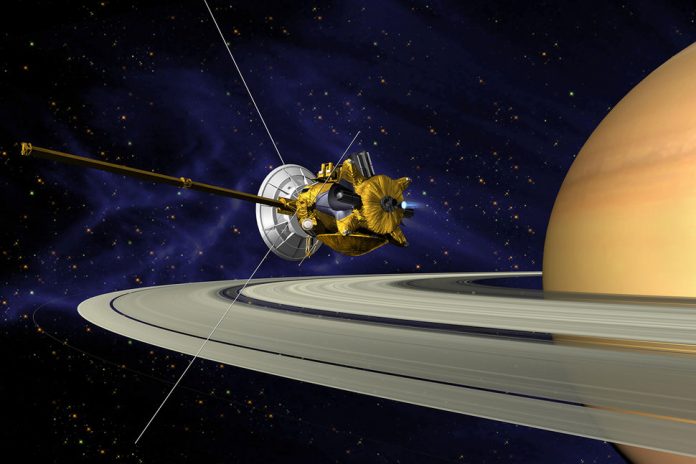NASA’s Cassini spacecraft is preparing for the final phase of a 20-year, 2.2-billion-mile mission that has amazed scientists with data and images of the planet Saturn, its rings and its moons.
Cassini left Earth twenty years ago and has been orbiting the gas giant for the last 13 years.
The craft has been responsible for some of the most beautiful and awe-inspiring images of the ringed planet but has now entered the “thrilling final chapter” of its life.
The space agency has released a video showing what is planned for Cassini’s final days before the probe is left to crash into the gas giant.
On April 26, it will make the first of 22 dives through an unexplored gap in Saturn’s rings, taking photos and sending data back to Earth.
Thomas Zurbuchen is the associate administrator for the Science Mission Directorate at NASA Headquarters in Washington.
He said: “No spacecraft has ever gone through the unique region that we’ll attempt to boldly cross 22 times.
“What we learn from Cassini’s daring final orbits will further our understanding of how giant planets, and planetary systems everywhere, form and evolve.
“This is truly discovery in action to the very end.”
Once Cassini has made its final crossing through the 1,491 mile gap, it will transition into its grand finale orbit – which will include a close fly-by of Saturn’s massive moon Titan.
During this period, Titan’s gravity will bend Cassini’s flight path, causing its orbit to shrink until it passes between the planet and the inner edge of its rings.
From there, the spacecraft will plunge through Saturn’s atmosphere on September 15, marking the official termination of its mission.
Cassini will continue to send back data to Earth as long as it can before losing contact.
The Cassini spacecraft was originally launched in 1997 and arrived at Saturn in 2004.
Since then, it has been exploring not only the planet, but also its moons: Enceladus and Titan.
The craft is responsible for the discovery of deep oceans underneath the surface ice of Enceladus.
Linda Spilker, Cassini project scientist at NASA’s Jet Propulsion Laboratory said: “This planned conclusion for Cassini’s journey was far and away the preferred choice for the mission’s scientists.
“Cassini will make some of its most extraordinary observations at the end of its long life.”
She added: ”Cassini’s grand finale is so much more than a final plunge.
“It’s a thrilling final chapter for our intrepid spacecraft, and so scientifically rich that it was the clear and obvious choice for how to end the mission.”
We're about to begin the final chapter of this remarkable story, the #GrandFinale at Saturn. Details: https://t.co/nYTscGSjRN pic.twitter.com/p9i1tNsUsL
— NASA Solar System (@NASASolarSystem) April 4, 2017















